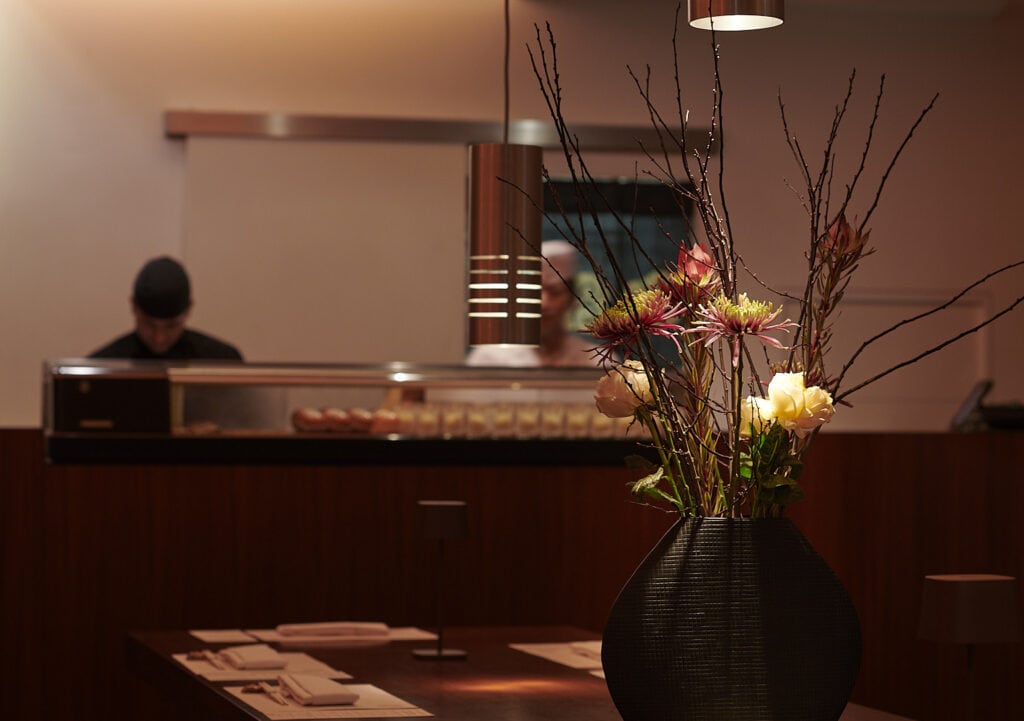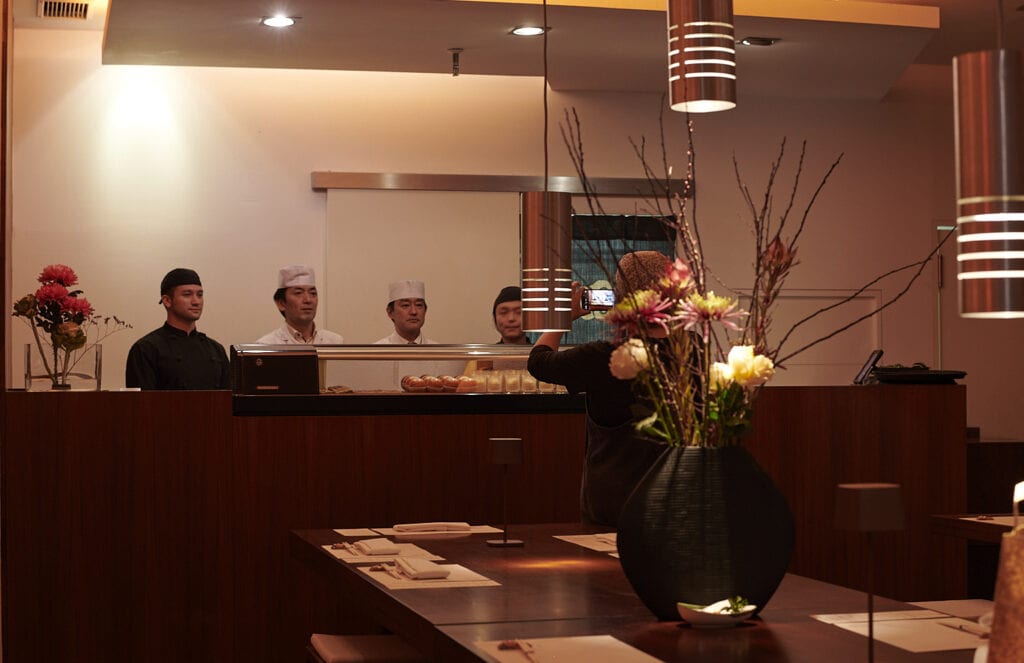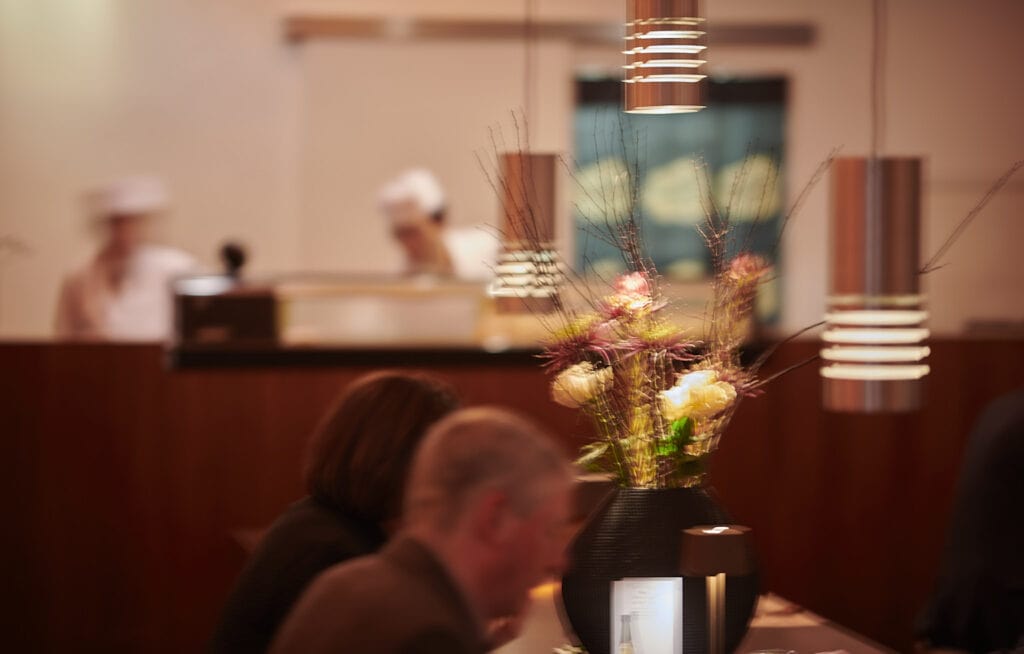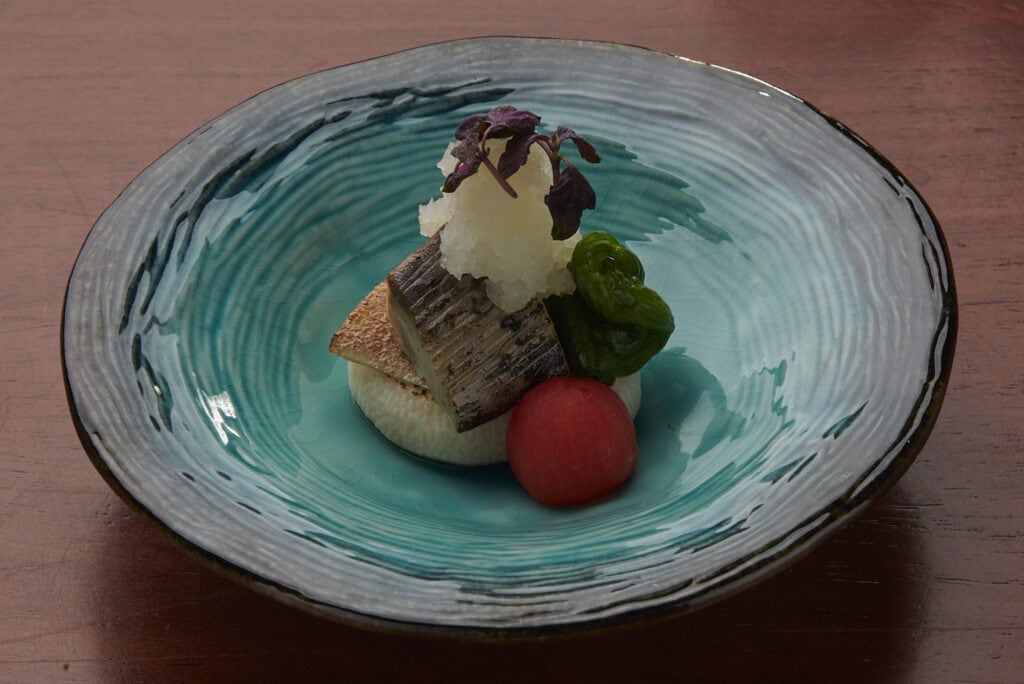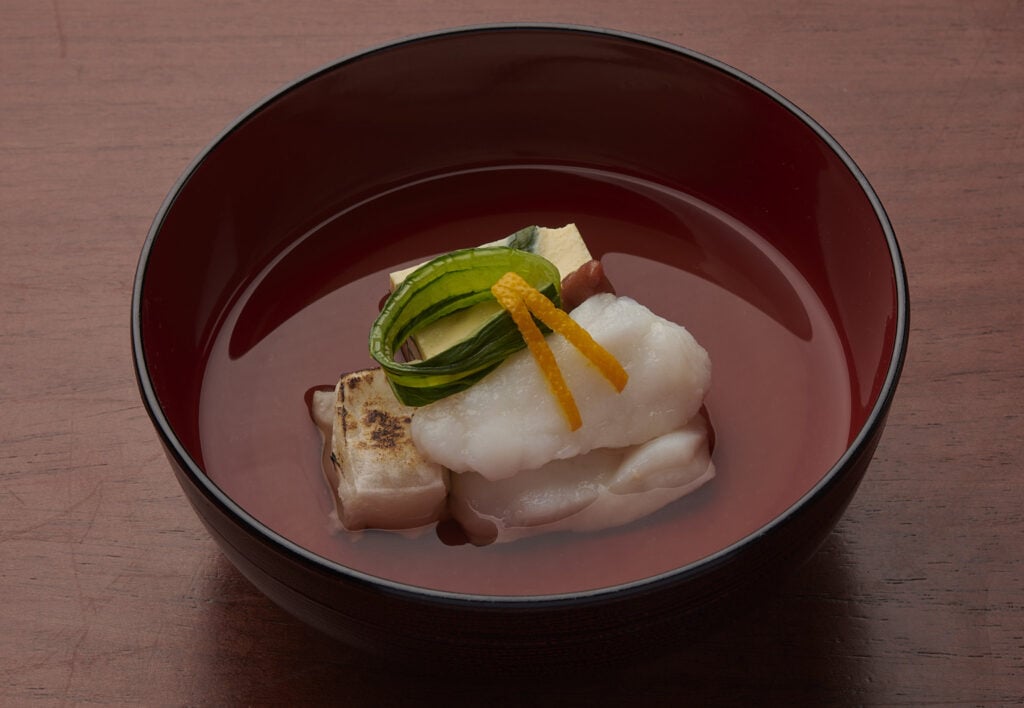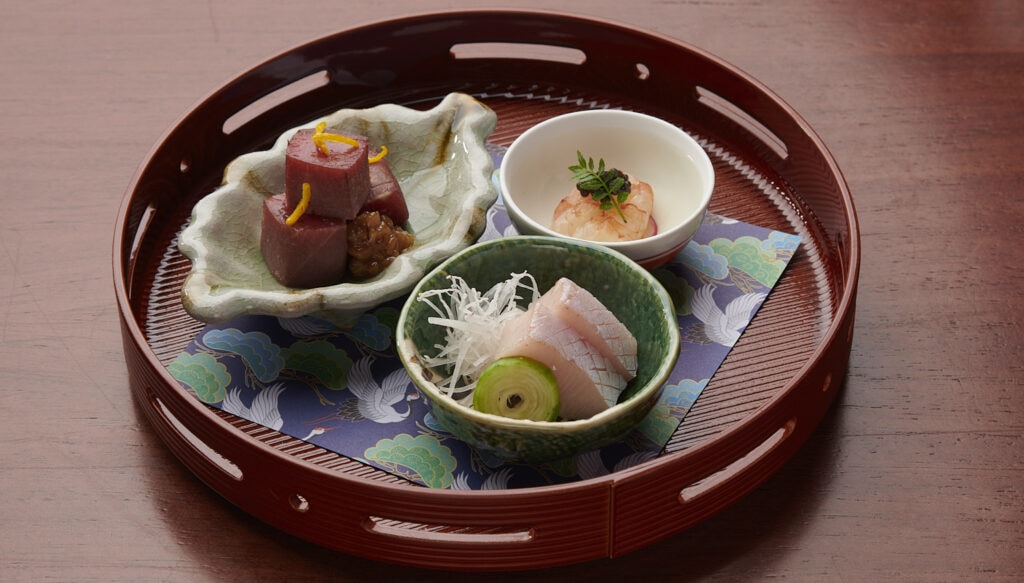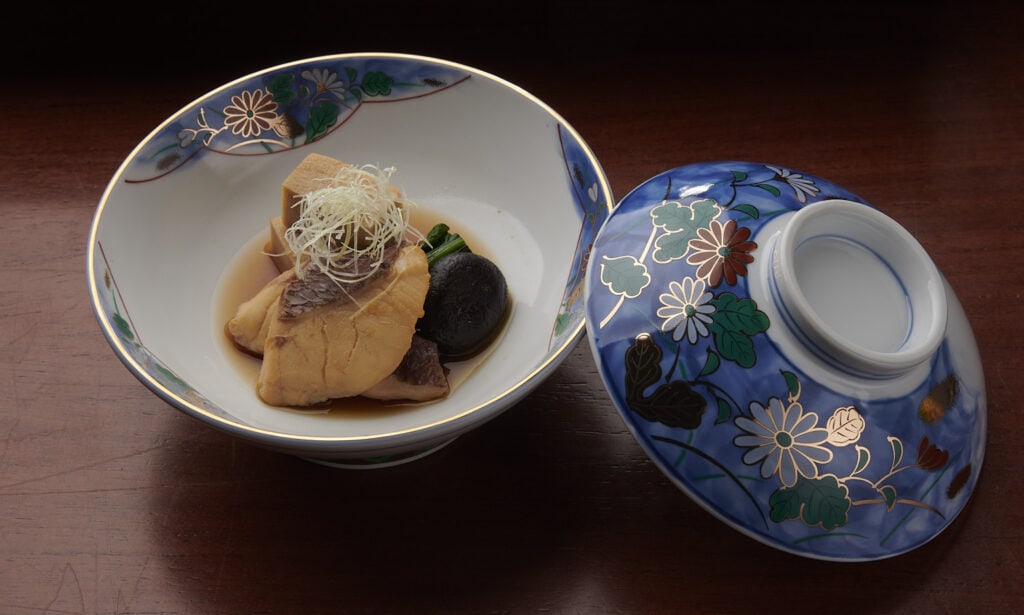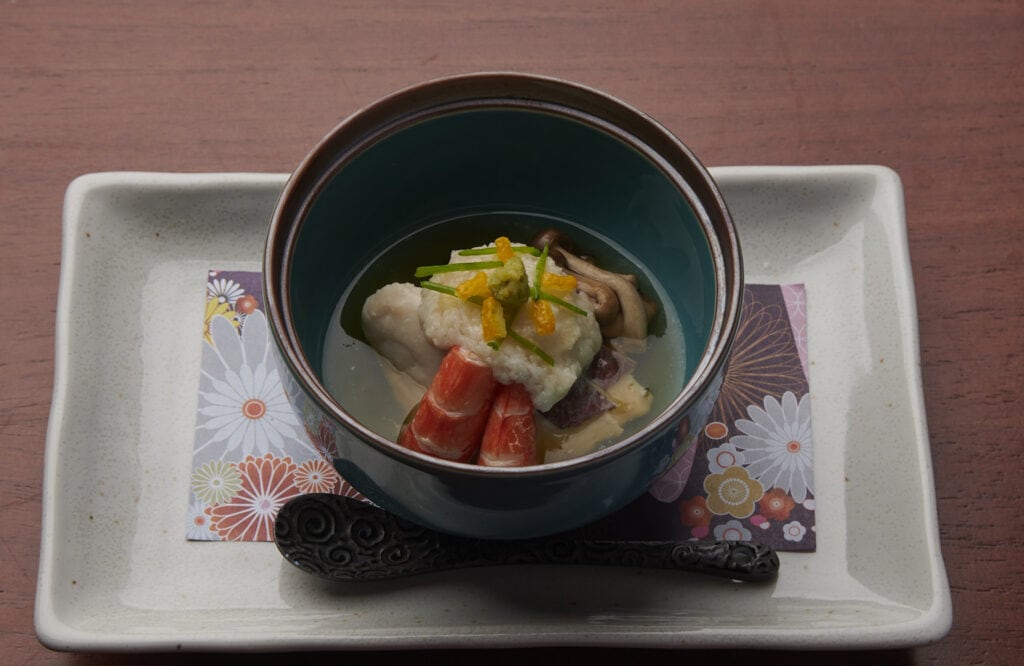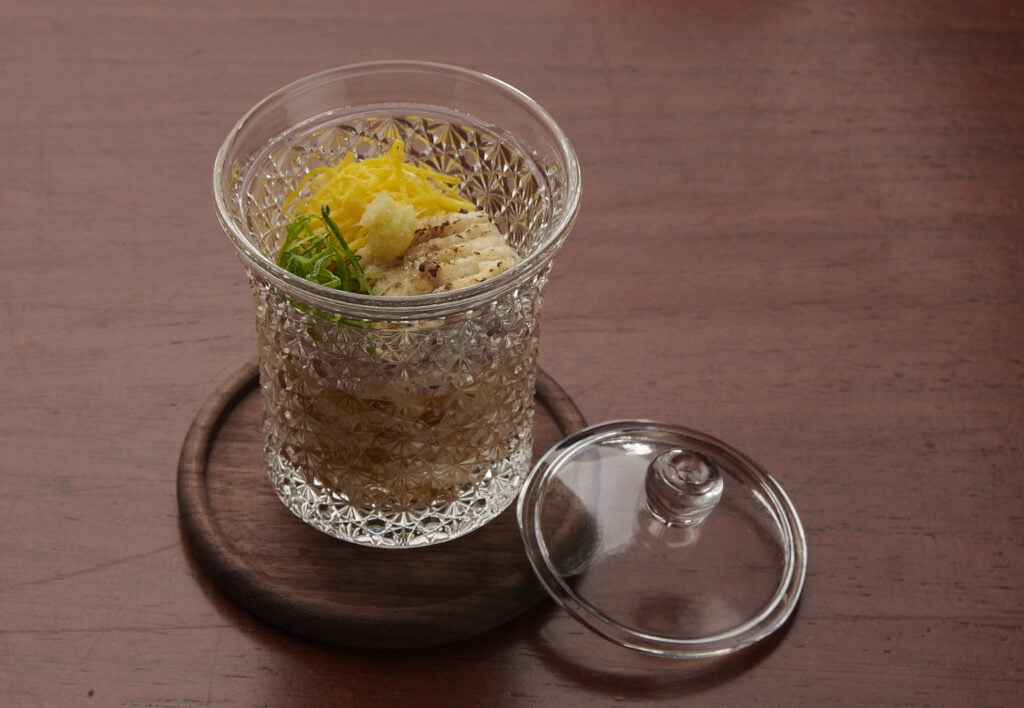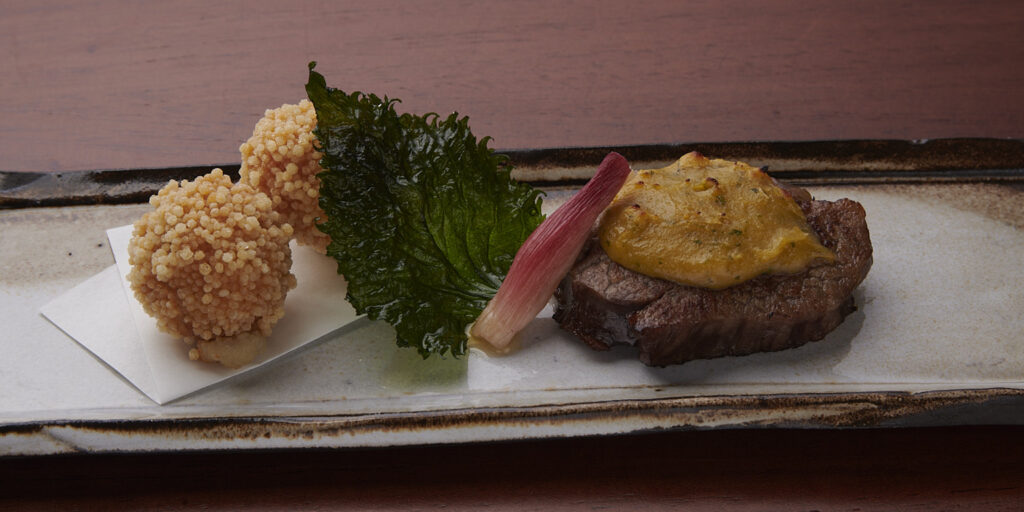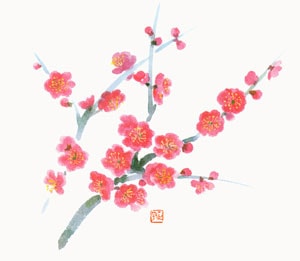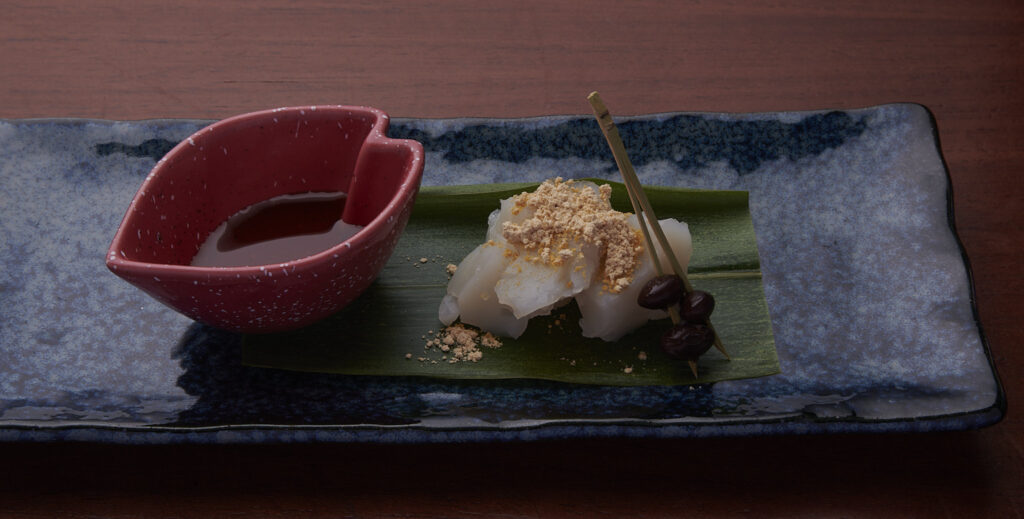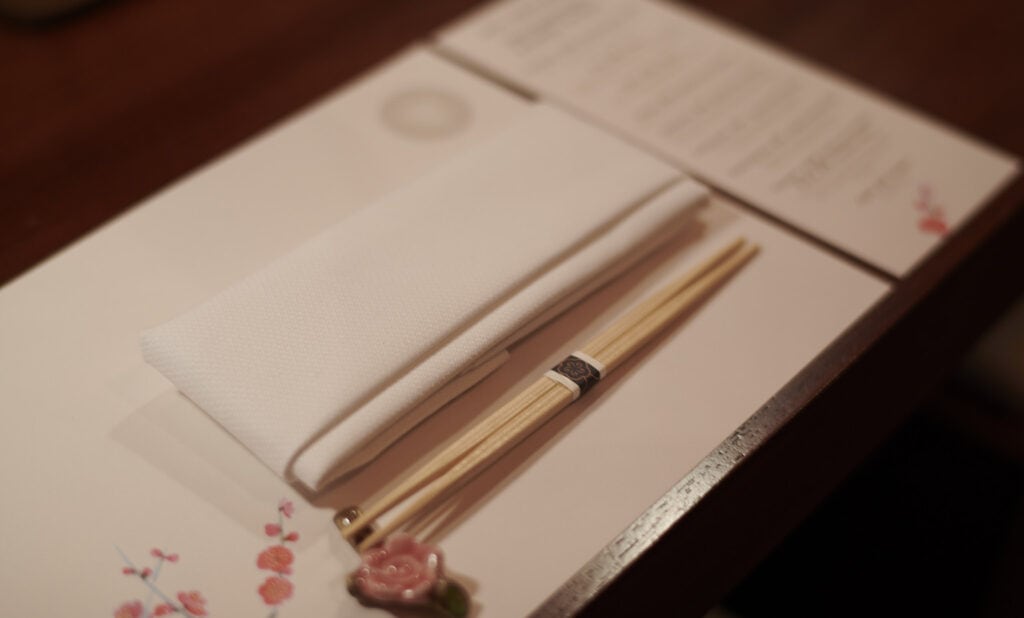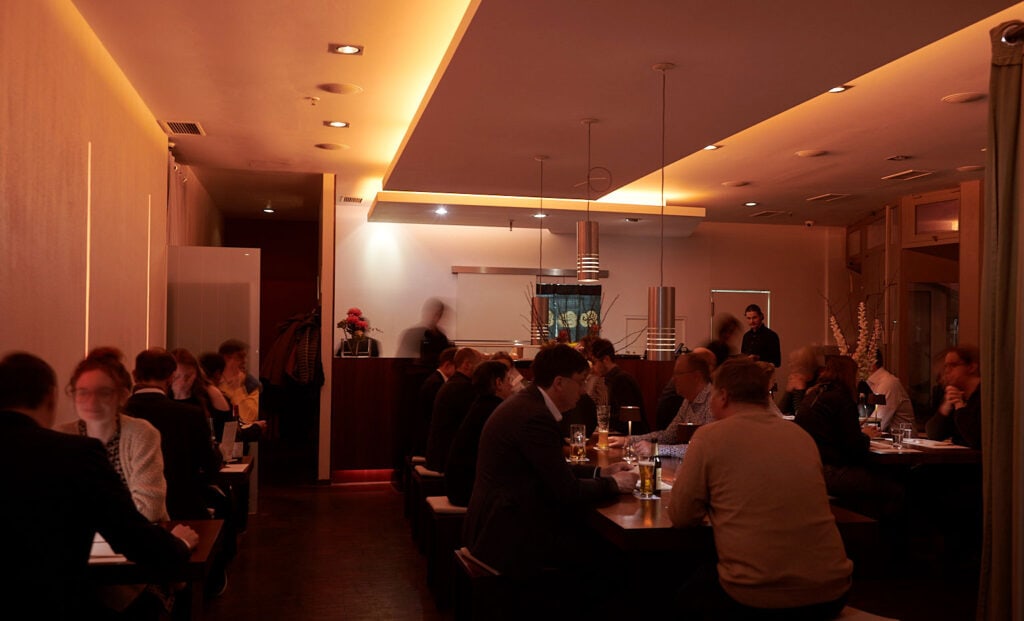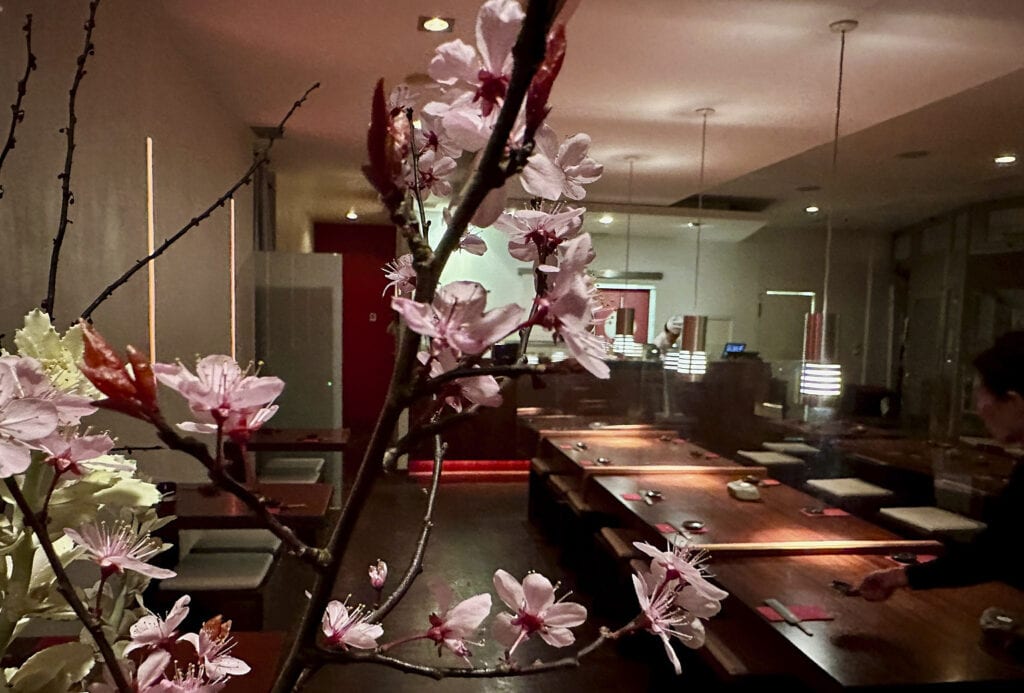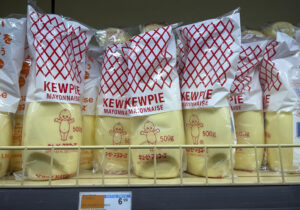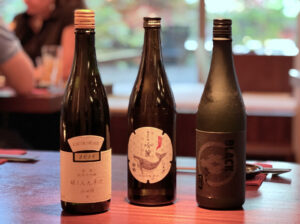For many years we have been offering culinary Events around Japanese cuisine which have already found loyal fans. Every time we try to come up with something new, to make each event a little unique.
And we are especially proud and grateful that our latest event series, in which we approach with humility and caution the absolute Japanese haute cuisine "Kaiseki" dared, is received with so much enthusiasm and appreciation by our guests!
Here we posted the menu for the event and included photos and customer feedback after the event.
Menu Kaiseki Event January 25 & 26, 2023 at sansaro

睦び月 会席料理 御献立 Mutsubizuki Kaiseki Ryōri
In ancient Japan, each month was described with terms that gave an indication of the season, and the first month of the year (i.e. January) was called Mutsuki.
There are several theories about the origin and etymology of Mutsuki, but the most popular theory is that Mutsubizuki (睦び月) became Mutsuki (睦月).
Mutsubizuki means getting along or being harmonious with each other.
If you imagine a family or relatives coming together for New Year's and enjoying a friendly get-together, the origin of the name makes sense.
"Getting along harmoniously" is the perfect motto for the year for a menu that revolves around Washoku, the Japanese cuisine of harmony rotates
We wish that you can experience a moment of harmonious togetherness with your family, life partner or friends with whom you visit us for our Kaiseki event.

Shunshukō 旬酒肴 delicacy with sake
炙り〆さば 焼き長芋 蛇腹胡瓜 十万十檸檬煮 赤紫蘇 みぞれ酢
Mackerel, yam, jabara cucumber, cherry tomato, red shiso leaves, daikon radish.
The marinated kan-saba (寒鯖) is lightly flamed. Kan-saba means "mackerel in the cold season", the season is January and with the marinade and flaming, chefs bring out the concentrated, fatty flavor of the mackerel. "Jabara" means that the cucumber is cut like a snake's belly. It is a traditional technique in which fine diagonal slits are made on both sides to make it look like a snake's belly.
There was a very brief snippet on Instagram about these preparations:
Iwa assemblage 5
Richard Geoffroy, the former cellar master and "mastermind" behind the taste of Dom Pérignon, has created his own sake IWA 5. We were present at the launch and were taken with the interesting concept - here we present the sake to our guests for the first time.
Owan 御椀 soup
鮟鱇の葛打ち 焼き餅 唐草豆腐 青梗菜 練り梅 とろろ昆布
Kuzu starch-coated monkfish, mochi, karakusa tōfu, pak choi, Japanese plum, tororo konbu seaweed.
Monkfish is the king of winter in Japan. Since it is a deep sea fish, there is no excess fat. The surface of the fish is coated with kuzu starch (edible flour obtained by refining starch from the roots of kuzu, a perennial vine in the legume family) to preserve flavor and served with a clear broth.
Karakusa is a steamed egg pudding with seaweed. It is so called because it looks like an arabesque pattern ("karakusa").
Koshi no Kanbai - Muku
The legendary favorite sake of our sake sommelière - a Junmai Daiginjō made from Yamadanishiki rice with a polishing grade of 48%. From the legendary sake prefecture of Niigata. We serve this sake on Room temperature.
Tsukuri 造里 sashimi
鮪湯引き角造り 寒鰤銀皮造り 赤海老昆布締めキャビア和え
妻一式 土佐醤油
Bluefin tuna Yubiki-Kakuzukuri, Yellowtail mackerel Gingawa-Tsukuri, Red shrimp marinated in seaweed with caviar.
Hamachi uses various Japanese techniques to reveal the beautiful silver color when the skin is peeled off. Gingawa means silver skin.
This form of preparation is then called gingawa-tsukuri. In Japan, the color of snow is often compared with the color of silver, so this dish is also to feel the winter on the plate.
Kikusui no Krakuchi
Also from Niigata, but here a Honjōzō sake, cooled.

Nimono 煮物 stewed dish
敏魚の煮付け
高野豆腐 どんこ椎茸 菠薐草 白髪ねぎ
Grouper braised in soy sauce, Kōya-Tōfu, donko shiitake mushrooms, spinach, leek strips.
Grouper (Jap. Ara) is a fatty but light fish, making it perfect for "simmering flavors," a hallmark of Japanese cuisine. Kōya-Tōfu bears its name because it comes from the famous mountain Kōya in Wakayama Prefecture. Through a special drying process, it absorbs the flavors like a sponge. Therefore, it completely absorbs the macaw broth and does not lose a drop of its deliciousness.
Donko are dried shiitake mushrooms collected fresh before their umbrella-shaped heads have fully opened. They are characterized by their thick flesh.
Tengumai
A Junmai sake from the rice variety Gohyaku-Mangoku, a wild Yamahai sake, we serve it warm in Ōchoko.
Mushimono 蒸物 steamed dish
真鯛と海老の山芋かぶら蒸し
しめじ茸 絹さや 柚子 山葵
Beet and yam dumplings stuffed with Japanese dorado and shrimp, simeji mushrooms, snow pea, yuzu, wasabi.
This is one of the traditional steamed dishes of Japanese cuisine using beets, a Japanese winter vegetable. Sweetened beets are wrapped in egg whites, coated with sea bream and topped with a thickened dashi bean paste. It is a dish designed to warm the body from the inside out.
Yokikana
A Junmai-Ginjō from Fukushima prefecture, served at Room temperature in the nosing glass.
Kuchinaoshi 口直し palate refreshment
鰻白焼き素麺
錦糸玉子 青葱 生姜 旨味出し
Susumezakana 進肴 another treat
牛フィレ肉の木の芽味噌焼き
里芋真砂揚げ 甘酢茗荷
Grilled beef tenderloin* with kinome miso, fried taro with rice crackers, Myōga.
* By the way, the "grilled beef tenderloin" was actually a tenderly grilled Wagyū fillet from Japan - sorry, that unfortunately got lost in the chaos of the preparations...
Yoshinosugi Tarusake
A futsushu from Nara
Tomewan 止め椀 soup for stopping
合わせ味噌仕立て
油揚げ 豆腐 青葱
Miso soup with abura-age, Tōfu, spring onion
Tomewan and shokuji are served together, no sake here. Of course you can order something else to taste or take a break with water.
Shokuji 食事 penultimate course
蟹と舞茸の炊き込みご飯
いくら醤油漬け 三つ葉
Rice with crab meat and maitake mushrooms, salmon roe, leaves
As always at Kaiseki, the "Shokuji" course serves to fill the stomach a bit more with rice or noodles after the various fine delicacies, here by combining typical winter flavors with rice to create a fortifying dish.
Kanmi 甘味 dessert
わらび餅
Warabi Mochi

Feedback on Winter Kaiseki 2023 in sansaro
So far we have four Kaiseki Events organized.
This time we were - similar to the events before - gifted with wonderful feedback, which we take the liberty to share with you. Because Kaiseki is for many first an abstract term and how else should you as a Munich resident be able to classify what is not typical here and served in various restaurants?
Competent guests
The special appreciation of the guests we had the pleasure to welcome that evening was pleasantly perceptible.
On the first evening, we were visited by long-time regulars, visitors to previous Kaiseki events as well as guests who were in the restaurant for the first time, such as food blogger Dorothée Beil.
We are also very pleased with the comment of one of their readers, who attests us a successful balancing act between a "daily sushi restaurant" and our culinary events. This is what we have been working for for many years: to represent Japanese cuisine at a high level every day, accessible to the most diverse groups of guests, with interesting culinary events around Japanese culture.

By loading the post, you accept Facebook's privacy policy.
Learn more
And on the second evening, to our great pleasure, we also had many knowledgeable guests from Japan and from the Munich area, some of whom already had worldwide experience with Kaiseki have collected.
Japanese guest:
"Incredible! This is an art! I've eaten a lot of kaiseki in Japan and this is so special, with so much attention to detail!"
His wife adds:
"Wonderful - this is real Japanese cuisine! So rare today even in Japan. I ate the food and immediately remembered my childhood when I sometimes went to a Ryōkan* with my parents." (*classic japanese hostel with focus on culinary menus)
Later he writes again by mail:
"... I have experienced Kaiseki many times through my business trip to Japan. But what you offer with Chef Matsui is very special. I have experienced a lot of new creative food. And most importantly, you can see a lot of effort behind it. Respect...."
Two guests who got to know the restaurant sansaro through their children address something that is very important to us:
"Wonderfully relaxed atmosphere and great that you manage to make younger and older people feel equally comfortable."
Two other guests, a little younger:
"We often escape to London for good food. The event today was a wonderful experience, a very balanced menu."
Wow.
We ourselves cannot keep up with the culinary experience of some of our guests. All the more we are pleased with this wonderful and appreciative feedback. Our customers show us the view from the outside and the comparison across borders and encourage us that we are on the right track and that our attention to detail is seen and appreciated. Thanks again for this!
And in addition to these - also for us always exciting and special - Events we continue to strive also on all "normal" evenings, where you can enjoy sushi à la carte and fine Japanese cuisine with us in the middle of the Amalienpassage can enjoy every guest, every plate with a sincere pleasure of your visit to us.
When will there be another kaiseki?
Are you also interested in a Kaiseki event, but could not attend this time?
Would you like other events about Japanese cuisine or have special questions that the Internet does not answer?
Let us know via our contact form!
We are always happy to receive feedback.
And who subscribed to the newsletter will of course be the first to be informed when we have another Kaiseki event, a Sake Tasting or a Whisky Tasting or other events.
Thank you and see you soon at sansaro!
PS: From here on you will find only organizational notes in the article, which have become obsolete with the conclusion of the event, but will remain online for future orientation.

Notes on your visit to the Kaiseki event
Our team intensively prepares everything for you: Decoration, food and drinks - everything should please your heart and your palate. So that we can succeed, here are a few hints to get you in the mood.
Japanese sake perfectly rounds off the taste experience of Kaiseki. Our sake sommelier has specifically selected sake to match each course, including varieties that we don't normally have on the menu.
Our recommendation: choose our sake accompaniment to the kaiseki!

Please understand that we may not be able to provide individual Intolerances or allergies can only be taken into account by omitting a dish - unfortunately, it is not possible to build up an alternative for all possible concerns with such an elaborate menu.

The Kaiseki event is designed to allow the concentrated and at the same time serene perception of Japanese food. This requires a certain palate and also a certain discipline.
We therefore ask for your understanding that Dogs and children should not be present at the event - simply because you can't control whether a dog barks, a baby cries or a toddler gets cranky. From our point of view, the event is not suitable for children under 14 years.

BPlease come punctually at the time booked for you, 18.00h or 20.15h., as the entire kitchen operations depend on it.
We have a very small kitchen and for the delicate kaiseki, you can't re-produce/send the courses individually.
And we will be happy if you can make the occasion a appropriate clothing select

Please also check your reservation data again - if there is any change in the number of persons, please let us know right away., as we still have some guests on the waiting list - maybe then someone else can enjoy.
Above all, it would be a shame if seats were left empty, especially since the seat reserved for you is yours alone for the entire evening.

We are very much looking forward to your visit and hope that you will be as enthusiastic as the guests at our previous Kaiseki events.
And if you already want to tune in, then jump again to the top of this page: we have again supplemented the descriptions of the individual dishes and courses in recent days.
